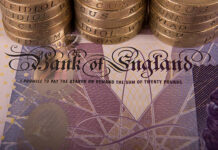Stock markets are a little flat on Wednesday as we await the Fed minutes and digest more inflation data from China and the UK.
We saw a strong rebound on Tuesday as some Russian troops completed military drills near the Ukrainian border and returned to their normal bases in what was the first de-escalation in the region in weeks. It came at a time when various world leaders were warning about the threat of invasion this week, something Russia repeatedly denied.
Friday’s warnings carried an additional urgency that triggered a sell-off late in the day and saw oil, gas, and gold rally. We’ve since seen some of those positions being unwound as the threat of conflict appears to have reduced. But with the threat level still relatively high, there’s still a certain amount of risk premium in the markets. Especially with NATO and Ukraine suggesting they aren’t seeing evidence of troops withdrawing yet.
We’re basically drifting from one crisis to another at the minute; from soaring inflation and higher interest rates to deteriorating living standards and now the prospect of conflict in Ukraine, which in turn exacerbates the first two. With tensions easing on the border, attention has quickly shifted back to inflation following some more disappointing figures this morning.
Pressure intensifying on the BoE
It seems a long time since we saw an inflation print that wasn’t above the consensus, or central bank estimates, which is fueling further concerns about interest rates and the cost of living crisis. While inflation is expected to peak in April, the road back is becoming ever-more perilous with every above-consensus reading. The peak is now likely to be higher again than many anticipated which probably means more rate hikes and a further squeeze on households and businesses.
Ultimately, the economy will suffer further even if many are better able to absorb higher prices as a result of savings built up over the last couple of years. That may encourage the Bank of England to be cautious in raising rates in the second half of the year as inflation falls but markets are clearly not of that view. Another five hikes are heavily priced in this year, on top of the two consecutive increases in December and February, which would take Bank Rate to 1.75%, the highest since the start of 2009.
Chinese inflation dips, paving the way for further rate cuts
China on the other hand is more focused on supporting the domestic economy, with inflation running well below target and slipping further to 0.9% in January. Producer prices remain high at 9.1% but have been on a downward trajectory in recent months which will allow the central bank to continue to cut rates this year and further shield the economy from the various headwinds it faces including the pandemic and property market turbulence.
Fed minutes to confirm hawkish evolution
I’m not sure what we’ll learn from the Fed minutes later today that we’re not already aware of, with numerous policymakers expressing increasingly hawkish views in recent weeks. Few have been as hawkish as James Bullard who’s called for a full percentage point of increases before July and raised the prospect of inter-meeting hikes. I expect the minutes will reflect the ongoing hawkish evolution at the central bank but it shouldn’t shift the dial as far as markets are concerned, with six hikes already priced in.
Oil edging higher again as NATO questions Russian withdrawals
Oil prices are trending higher again on Wednesday, despite tensions in Ukraine appearing to ease. They spiked late on Friday and at the start of the week as the perceived risk of a Russian invasion increased, threatening to impact supplies in an already extremely tight market.
While crude has pulled back from the highs as Russian troops began leaving the border – NATO remains unconvinced by those assurances – the market remains extremely tight and prices had been on an upward trajectory prior to the escalation. The softening of tensions may have only delayed the march to $100, rather than preventing it. API reported a small drawdown last week which is roughly in line with what’s expected from the EIA report later today.
Gold remains supported as inflation continues to beat expectations
Gold is trading a little higher again today and above $1,850 where it has dipped below over the last 24 hours. This is the first big test of support, with it having been a major barrier of resistance in January. If it can hold above here, we could see it target yesterday’s highs again in the coming days and weeks even as the risk of a Russian invasion declines.
The yellow metal continues to be supported by rapidly rising inflation even as markets price in more and more rate hikes from central banks. Another above-consensus reading from the UK this morning shows the trend is not improving as we near the peak over the next couple of months. Gold could remain well supported for a while yet.
A major breakout coming for Bitcoin?
Bitcoin continues to look very healthy after weathering the geopolitical storm well before benefiting from the improvement in risk appetite on Tuesday. Once again it finds itself trading a little shy of $45,500 where it ran into resistance last week after repeatedly seeing support there back in December. A move above here will be a big psychological boost and could propel bitcoin higher. Of course, risk appetite remains important, especially that linked to inflation and interest rates, which could continue to be a drag if anxiety remains in the broader markets.













